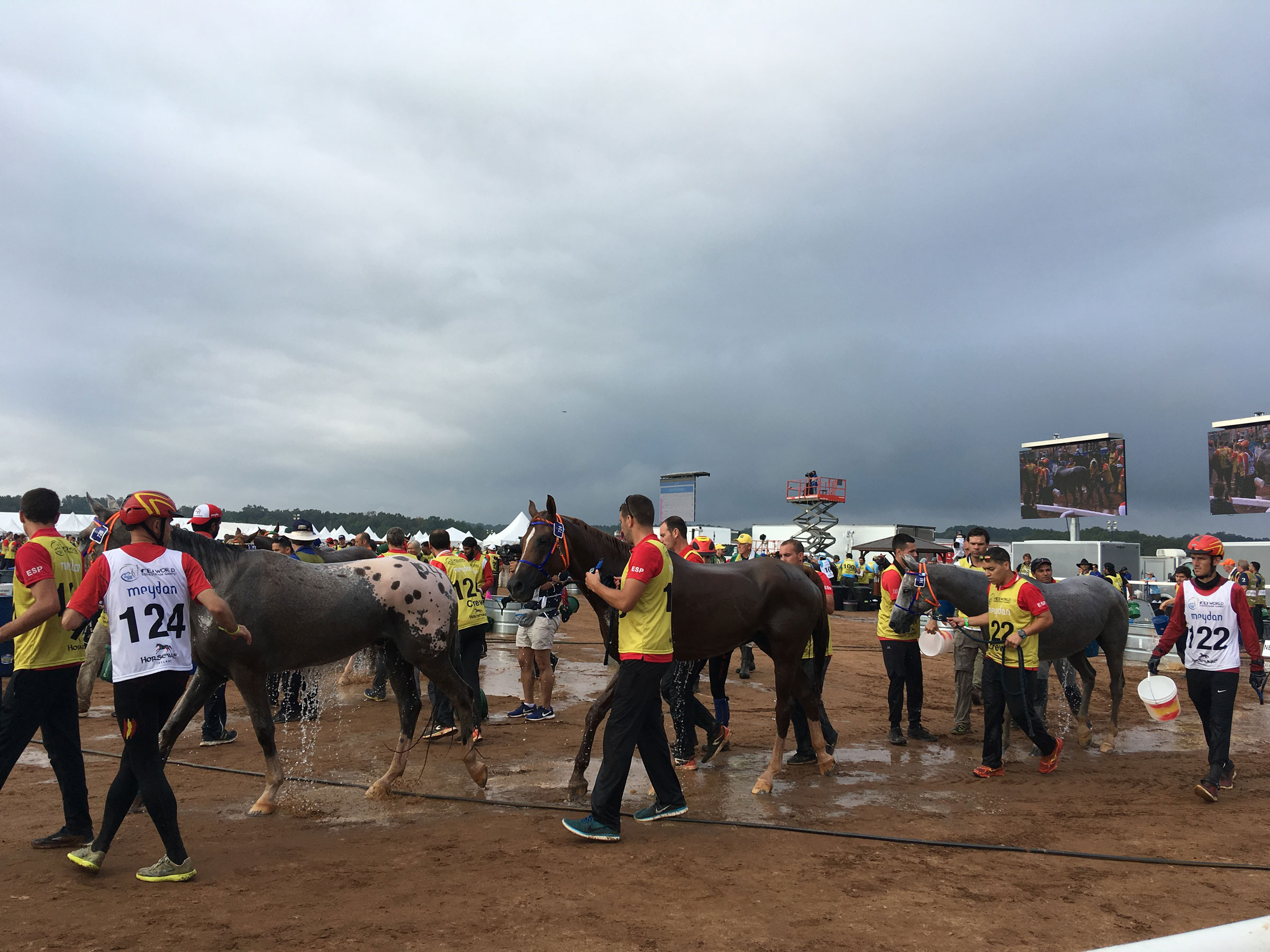
For those of you who are passionate about distance riding, recent changes implemented by the American Endurance Ride Conference (AERC) have had positive impacts on improving equine welfare.
At the AAEP Convention held December 8-11, 2019, in Denver, Olin Balch, DVM, presented an overview of 17 years of AERC data on endurance horse fatalities. Between 2002-2018, there were 335,456 starts at AERC-sanctioned events, with 127 fatalities.
Three different groups of horse fatalities were considered:
- Group 1 = 82 competing horses with metabolic disease;
- Group 2 = 24 competing horses with non-metabolic disease, such as falling off a cliff or the trail;
- Group 3 = horses just present at the ride site but not necessarily competing.
Neither the year of occurrence nor regional location had any effect on the likelihood of fatality.
Looking specifically at metabolic fatalities that occurred within three days of a race, the most significant effect on incidence related to distance, with 100-mile competitors incurring the most fatalities.
For every 1,000 starts:
- All starts incurred 0.28 fatalities;
- Limited distance (≤ 30 miles) incurred 0.12 fatalities;
- 50-mile competitions incurred 0.34 fatalities;
- 100-mile events incurred 1.48 fatalities.
Statistics from a USDA equine mortality review of horses between 1998-2005 identified 0.14 fatalities per 1,000 horses, whereas The Jockey Club had 1.8 fatalities per 1,000 starts in that same time period.
Analysis of Group 1, i.e., 82 endurance horses that developed and succumbed to metabolic disease, showed that 46 horses (56%) were eliminated at veterinary checks during the event; nine horses (11%) finished the ride but were eliminated at the finish line and did not receive completion; and 27 (33%) horses were awarded completion and deemed Fit to Continue.
Another significant finding is that although only 4% of starters competed in 100-mile events, this group comprised 24% of the fatalities.
Limited distance competitors had very few fatalities. Fifty-mile horses had three times as many fatalities as the limited distance group but still significantly less than the 100-mile competitors.
Risk increases with ride distance, and in fact, 77% of the fatalities were associated with metabolic demands. Of these, 85% were attributable to gastrointestinal abnormalities.
With these findings in mind, AERC veterinarian officials recommended changes that were implemented in 2015:
- Horses are required to meet recovery pulse within 30 minutes of crossing the finish line instead of the previously allowed 60 minutes to reach pulse criteria, usually a heart rate of 60 or 64 beats per minute.
- At least two control veterinary judges must be present at an AERC-sanctioned ride.
- A triage/treatment veterinarian must be present at all AERC-sanctioned rides.
AERC veterinarians feel that the implemented changes in 2015 have positively improved welfare for 100-mile equine competitors:
- In 2002-2015, 1.74 fatalities occurred per 1,000 starts;
- In 2015-2018, 1.16 fatalities occurred per 1,000 starts.
The Tevis Cup Ride also implemented new requirements to help reduce the number of metabolic disorders. This historic race outside of Auburn, California, has 23% of all 100-mile starts, with an average of 184 horses qualified to start each year. The new requirements are as follows:
- The horses must be at least 6 years old.
- Both horse and rider must have completed a minimum of 300 miles of competition.
- Cut-off times are in place for arrival and departure from each veterinary check point; failure to meet these specified times results in elimination.
- An additional safety veterinary exam is performed 1-2 hours following completion; this exam does not impact completion status of the horse, it is simply to ensure equine health and safety.
Also, in 2012, AERC initiated recognition of “decade teams,” which are horse and rider teams that compete together in a 50-mile or longer competition at least once a year for 10 years, not necessarily consecutive years. The rider must be an AERC member during those years. So far, this accolade has been awarded to 605 teams, and it promotes value and appreciation for athletic longevity of horses in the sport of endurance.



